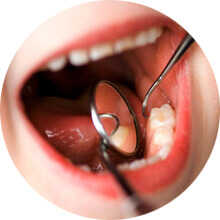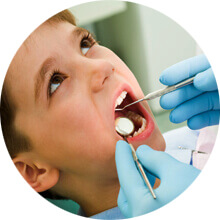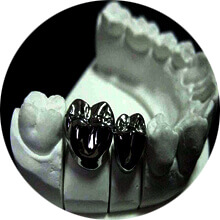
Cleaning & Fluoride
Your child’s teeth will be cleaned to remove plaque and calculus (bacteria) that can cause gum disease and tooth decay. Topical fluoride will be applied to the teeth to help them remineralize and become more resistant to tooth decay. A thorough cleaning and fluoride treatment every six months has been shown to be an extremely effective way to prevent dental disease.










